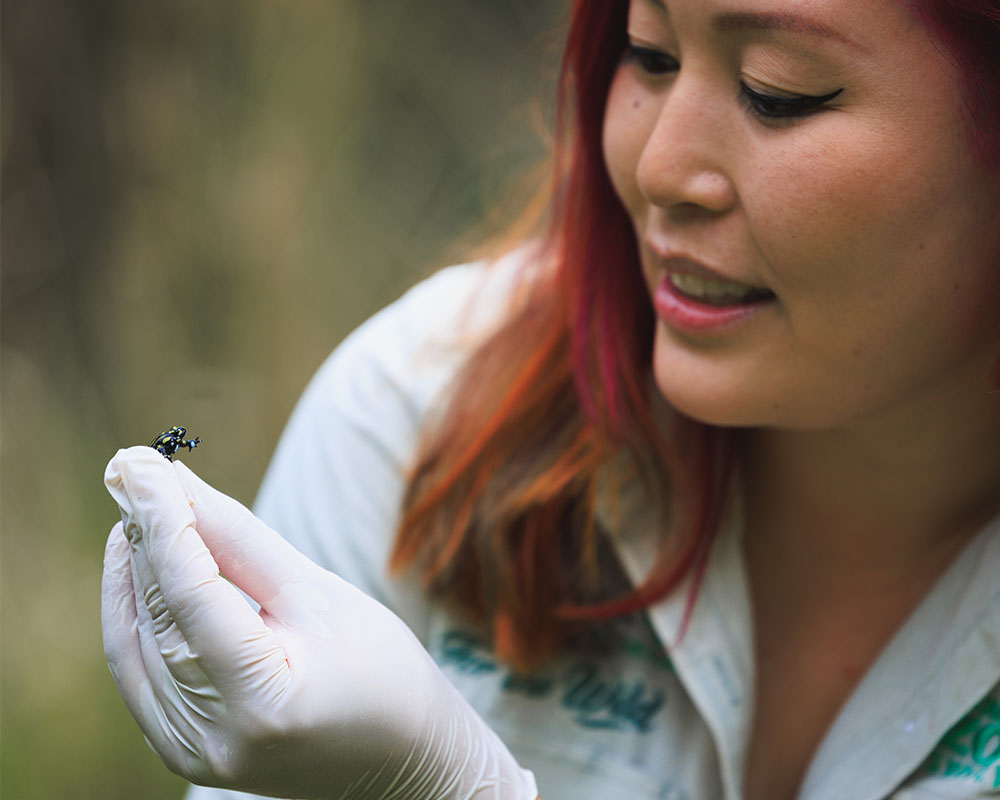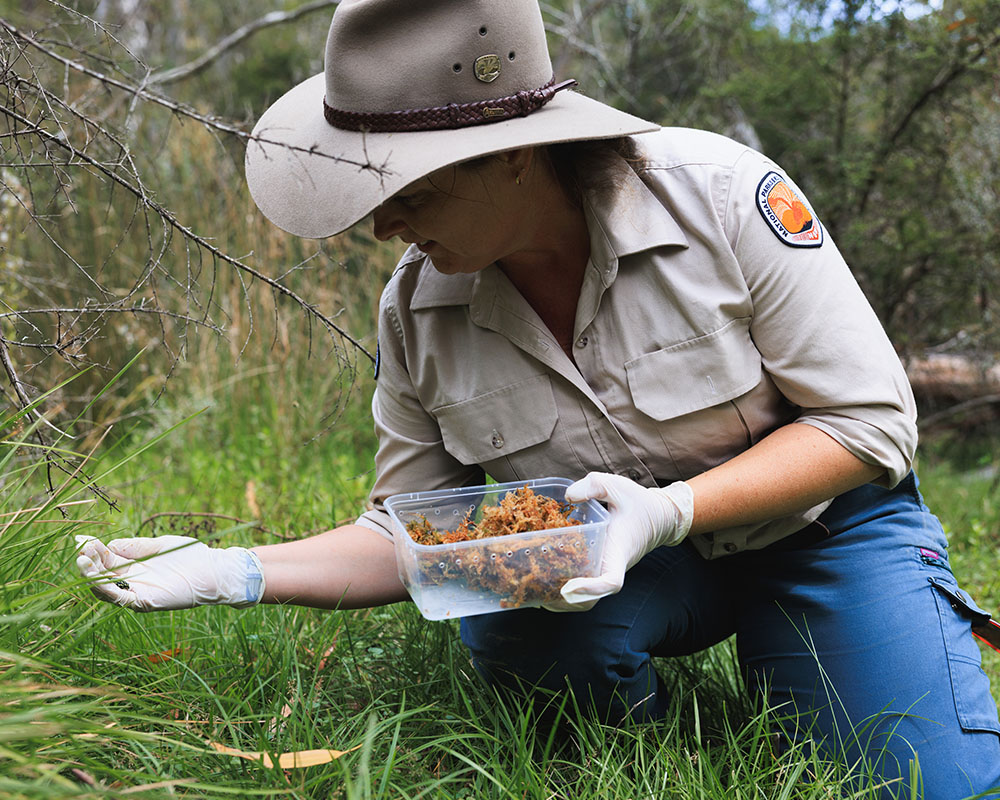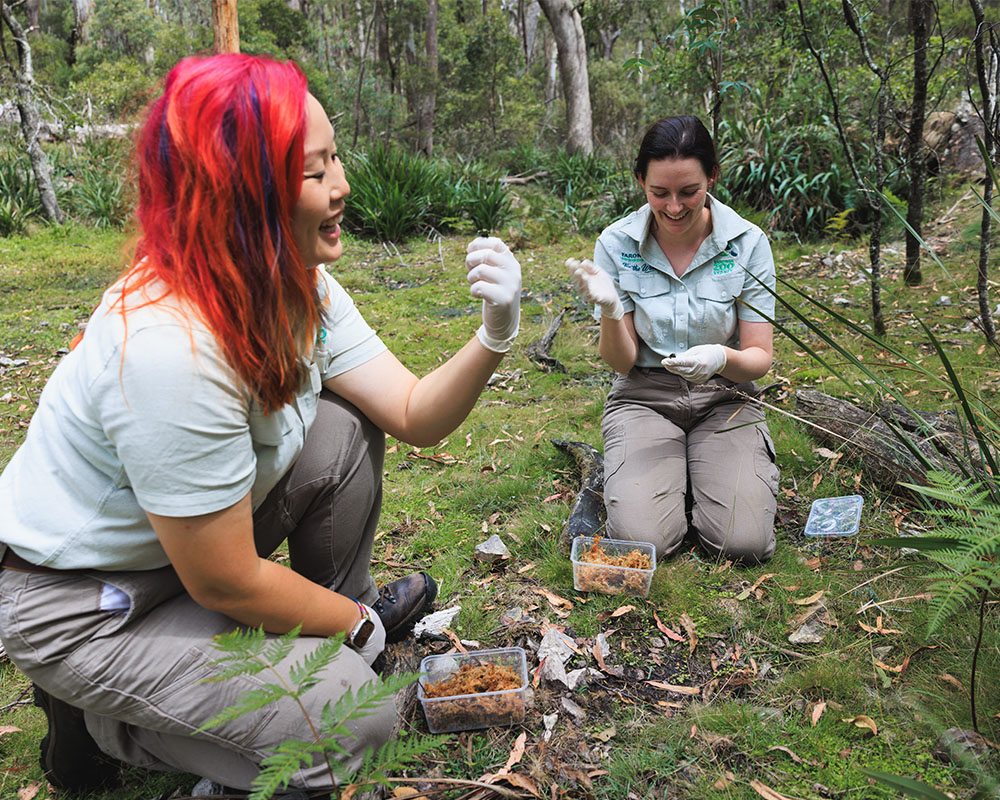Posted on 20th March 2024 by Media Relations
In a significant stride in the conservation for one of Australia's most threatened amphibians, Taronga Conservation Society Australia has successfully released 115 Northern Corroboree Frogs into their native home range within the Brindabella Mountains, situated on the border of New South Wales and the Australian Capital Territory.
On the 29 February, members of the Taronga team departed on their nine-hour return journey to release a combination of female and male one-year-old Northern Corroboree Frogs to help bolster wild populations. The release was undertaken in close collaboration with the NSW Saving Our Species program and the National Parks and Wildlife Service.
Northern Corroboree Frog populations have experienced rapid declines in recent years, with less than 1,200 mature Northern Corroboree Frogs estimated to be remaining in the wild. Threats such as chytrid fungus (a deadly fungal disease affecting amphibians worldwide) have been further accelerated by the impacts of climate change. Northern Corroboree Frogs were heavily impacted in the Black Summer bushfires when up to 70% of the Fiery Ranges populations were burnt. "This release represents a crucial step forward in our collective efforts to safeguard the Northern Corroboree Frog from extinction," said Michael McFadden, Herpetofauna Supervisor at Taronga Conservation Society Australia.



"By reintroducing these frogs into their native environment, we are not only providing them with a chance to survive in the wild but also promoting the health and resilience of the entire ecosystem."
The Northern Corroboree Frog is an iconic and critically endangered amphibian species native to the sub-alpine regions of New South Wales and the Australian Capital Territory. Unlike many other frog species, Northern Corroboree Frogs cannot jump or hop; they walk and seek shelter under logs and vegetation. Their vibrant black and yellow skin also serves as an indicator of their toxicity, with each pattern being as unique as a human fingerprint.
Since 2010, Taronga has worked in partnership with the NSW Government’s Saving Our Species Program to breed and release the Northern Corroboree Frog. It is hoped that release efforts will allow breeding populations to persist in the wild and enable them to develop resistance to the chytrid fungus.
In a sign of hope for the species, mature males that were bred at Taronga and released as juveniles have been heard calling at release sites in the wild, demonstrating that some are surviving into adulthood despite the presence of chytrid.
In addition to conducting regular releases, population monitoring, and managing the zoo-based breeding program, Taronga's Reproductive Biologists are contributing to the conservation of this critically endangered species through strategic biobanking. A week after the successful release, Senior Reproductive Biologist Rebecca Hobbs conducted sperm biobanking on 10 male Northern Corroboree Frogs to ensure populations remain genetically diverse and adaptive to the suite of environmental stressors that continue to drive declines.
The objective of this aspect of the recovery program is to enhance and implement established sperm collection techniques at Taronga’s Cryodiversity Bank Lab and utilize cryopreservation methods to preserve the genetic diversity of individuals participating in existing breed-for-release programs.Taronga collaborates with the Department of Climate Change, Energy, the Environment, and Water to support several amphibian conservation initiatives, including those focused on the Southern Corroboree Frog and Booroolong Frog.